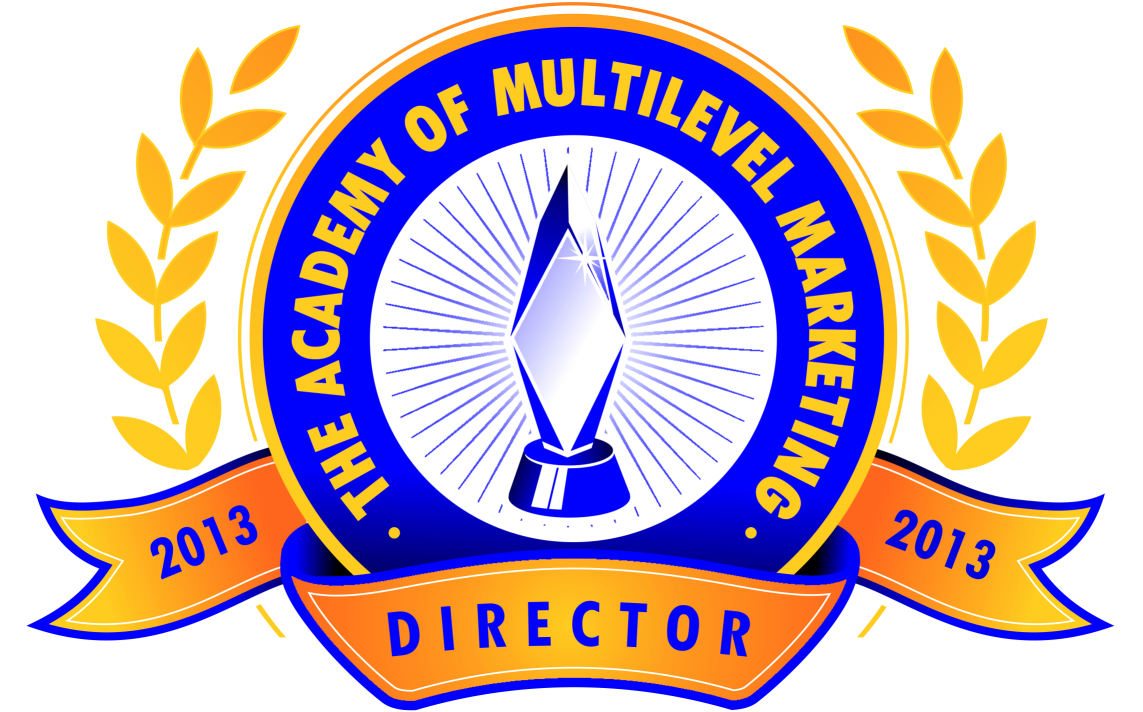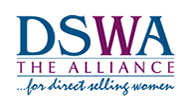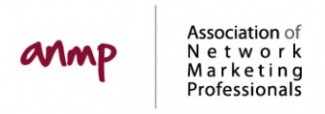By Len Clements © 2010
After several weeks of further research into Numis Network, culminating in an in depth interview with Numis president Ian Cordell, several of my questions and concerns have been answered, and resolved. And new ones have been raised.
Competitive Pricing
In my previous review I questioned the pricing of the Numis coins, primarily the American Silver Eagles (2009 and 2010) rated a perfect MS70[1]. Admittedly the margin for error on the limited number of coins I surveyed was significant (i.e. 9 dealers and 20 closed eBay listings for the 2010). The results are now significantly more valid.
A survey of 104 closed eBay listings and online listings from 29 dealers resulted in an average price for the 2010 MS70 Silver Eagle of $88.77. Numis offers the same coin for $99.95, which does make them competitive, especially when considering that 17 of those 133 listings were not only higher that Numis’s price, but topped out at $139.00. The Numis 2009 MS70 Silver Eagle sells for $125.00. A survey of 62 closed eBay listings and 26 dealer prices averaged $90.87[2], with ten of 88 listings over $125.00, and as high as $216.75. But there’s more to consider here.
The market price is also effected by the service used to grade the coins. There are four major graders: PCGS, NGC, ANACS and ICG. The same two coins graded by PCGS averaged $85.43[3] and $85.86[4] respectively. NGC came in at $95.14[5] and $154.81[6]. However, ANACS graded 2010 and 2009 MS70 Silver Eagles averaged $64.24[7] and $67.01[8] respectively. ANACS is the grading service used by Numis. According to several sources online, and those I personally interviewed, ANACS coins are generally undervalued because they are more generous with their MS70 grades. This is not only revealed in my own survey, where ANACS rated coins were valued 30.6% lower than the same PCGS and NGC rated coins, but confirmed by the Coin Dealer Newsletter[9] (April 23rd, 2010 edition) which tracts the comparative market values of ANACS, PCGS, and NGC, and ICG rated coins. They were showing ANACS rated coins to be, on average, 25.9% less valuable than those rated by PCGS and NCG.
Although Numis is not competitive with only the MS70 2009 Silver Eagles, and generally seems to be running within the top half of the pricing channel on most of their other coins, overall they are competitive and do beat the market on a select few coins. For example, Numis offers the 1997-S MS70 Silver Jackie Robinson Commemorative coin (which they graciously sent me as a gift) for $499.00, and it averaged $525.38 in five closed eBay auctions. Numis also averaged a little better than the market on the 2009 MS69 Silver Eagles – $30.00 vs. $31.19[10]. Furthermore, Mr. Cordell does make a valid point that there is an intrinsic added value to products offered via a network marketing program, such as the personal attention, convenience and support, that you wouldn’t get from simply buying a coin from a dealer and walking out the door. He also asserts, although not quite in these words, that there’s a double standard when flagship Jungle Juice products are routinely sold within MLM for three to four times their actual value (not all, but most), yet I’ve challenged them for having only one of their many coins selling for about twice market value (when compared ANACS to ANACS) and a few others offered at 10-20% higher. His point is valid there as well. No one holds a gun to your head and forces you to buy a 2009 MS70 Silver Eagle from Numis. Go get that coin from eBay for $60.00, then get the rest from Numis.
Where’s The Margin?
Numis pays $6.00 per $99.95 coin in their binary pay plan ($30 for every $300 in the weak leg), which means they actually pay out around $12.00 overall plus a little more for matching bonuses. At one time I believed that the margin to afford this payout was being created by Numis buying at the low end of the pricing channel and selling at the high end. For example, buying a 2010 MS70 ASE for around $80.00 and selling it for $99.95. But even then there wouldn’t be enough margin to afford the binary payout and keep the lights on and the landlord happy – let alone make a profit.
So where does Numis get the margin to afford this pay out? They buy it.
Modern day American Silver Eagles (ASE), a bullion coin that contains an ounce of virtually pure silver, can be purchased for about $20.00. That’s a couple bucks over the “spot” price for an ounce of silver at that point in time. ANACS charges $10.00 to have such a coin graded and “slabbed”, which means encapsulating inside a plastic casing. If you send 100 coins at a time the shipping costs defray to about 70¢ per coin (total both ways), so call it $10.70. Numis claims, and ANACS confirmed, that on average about 10% of all current year, uncirculated ASEs grade out at MS70, and the majority of all others come back MS69. If it grades MS69 its worth about $30.00. If its MS70, Numis can sell it for a competitive $99.95. The MS69s are then sold for about break even, and the MS70s are sold at a $69.25 profit ($99.95-$30.70). So, if you could buy a coin for $20.00, then pay someone $10.70 to make it worth $99.95, how many times would you do that? A lot? So although this explains how Numis can comfortably afford the binary payout, their ingenuity employed here raises a new potential challenge – you can do the exact same thing! If you like that $35.00 bottle of Jungle Juice, you can’t go to the manufacturer and tell them to crank you out a few bottles for $6.00. Well, you can, but they’ll look at you funny and tell you to go away. But you can go to a place like, for example, Northwest Territorial Mint[11], and buy 100 ASEs, then send them to ANACS, then sell the 90 that come back MS69 for about what you paid for them (including grading) and sell the 10 that grade MS70 on eBay for around $85.00. That’s a total expense of $3,070 and income of $3,550 for an ROI[12] of 14.5%. And this isn’t even considering your initial $2,000 investment is for, well, money. Legal American currency. Kind of like paying $2,000 for 8,000 Washington quarters. So when you consider only the extra grading expense of $1,070 compared to the net gain in overall value of $1,550, that’s an ROI of 44.86%.[13] The question is, is this really a viable option for a Numis Network participant? Mr. Cordell asserts it is not, and I tend to agree with him. Here’s why…
There are only three reasons why a Numis Network member would buy a silver coin each month for $99.95:
1) As a token purchase to meet a quota in the compensation plan;
2) To amass silver bullion as an investment (to resell later);
3) As a numismatist looking to add to their coin collection.
While there are those who surely fall into category #1 in every MLM opportunity, I don’t believe this is prevalent in Numis Network. It’s a lot harder to make that case in programs where members are buying a bottle of fruit juice for $39.95. I’m not saying such a case can’t be made in some cases – it’s just a lot harder. Certainly harder than a program based on silver and gold coins where the price paid is comparable to the open market price. With Numis, it’s easy to accept that members are buying the coins because they actually want them.
Those looking to buy gold and silver coins primarily as an investment would more likely just buy ungraded bullion coins for a little over the current spot price. They would also tend to buy more than one coin a month, and wouldn’t care what coin it was. They’d just buy rolls of the same coin. It’s also unlikely they’d buy graded collector coins that tend to go up in value based on scarcity from a company that, by its very nature, is designed to reduce scarcity. The bigger Numis gets, the more ASE coins they’ll need to send to ANACS, and the more MS70 ASEs flood into the market.
It only makes sense that folks would join Numis’s “Coin of the Month” program to build a collection of different coins. Of course there will be exceptions who’ll fall into category #2, just as there are in #1, but I do believe there’s plenty enough in category #3 to make Numis legit. So yes, you can essentially produce your own MS70 American Silver Eagles for around $31.00, resell them for about $85.00 and keep the profits all to yourself, and I do see a few of those in category #2 pursuing this. But even then, they’ll most likely be doing this in addition to building their Numis business and collection rather than instead of doing this.
At one point earlier in my investigation I assumed that either the distributor-centric $495 Executive package, or its $325 Fast Track Collector’s Kit component, or both, were padded to afford not only these per coin commissions, but the upfront $100+ enrollment bonuses as well[14]. Based on years of legal precedent, MLM companies are usually advised not to build in a lot of profit into things only distributors would purchases (no one should make money by just the act of recruiting, not even the company). I still don’t see what distributors are getting that would have cost Numis anything close to $170 (the difference between the $495 Executive package and the $325 FTC Kit), and even the $75.00 Basic Associate kit appears to have a healthy profit margin, as does the personalized website fee which amounts to $119.40 annually. No commissions nor bonuses should be derived from these items, and Numis declares as such on their website. Therefore, there is no question these are significant profit centers for Numis corporate. However, this is an aspect of an MLM program that is rarely, if ever, the catalyst to a regulatory legal action. There’s usually a larger issue that generates a lot of complaints that causes the investigation, and then things like this are thrown in later in the legal authority’s efforts to pile on evidence to make their case. This is just another little nit that a state or federal regulator might pick should something more significant cause Numis to appear on their radar. The harder I look at Numis, the harder it becomes to find anything significant that could put them in such jeopardy.
I no longer believe the Fast Track Collector’s Kit is such an issue. We know that the attaché case and an American Silver Eagle coin account for about half of the $325 price. Although I’m still not buying the “price savings” benefit between member prices and the arbitrarily higher non-member prices, Mr. Cordell did make a good case for why the “Silver Coin of the Month Club” membership and the “Coins are Cool” online training not only could account for the other half in theory, but genuinely has commensurate value to a bona fide end user. Yes, you can search for and gather all the same information for a lower cost, but he’s right in that people will pay to have it all handed to them in one place.
Divesting from Investing
Another area of concern are the legal ramifications of selling coins as an “investment” that will increase in value, or is at least a hedge against inflation. Such items could be considered a “security”, which must be registered with the Securities & Exchange Commission, and such sellers must be licensed. That’s why Numis does, in fact, go to great lengths to inform and educate their reps about their limitations when making such claims. That is – don’t! Ever!
Numis management has publicly declared more than once that if they have to build the largest, most active compliance department in the MLM industry to reign in such claims and claimants, they will. It appears they may very have to. Gold and silver, in any form, is already a well known and very popular commodity investment. The fact that it’s most often bought and sold as bullion coins only makes it that much tougher to force a dichotomy between numismatic coins and “investments”. The popular comeback is that Numis is in no different a position than nutritional MLMs that might make disease benefit claims. I still disagree. The analogy would be valid if MLM companies were selling aspirin or penicillin and then asking their reps to not make pain relief or anti-bacterial claims. In fact, the web is loaded with Numis reps either eluding to, or blatantly exclaiming, that their coins are great, value increasing investments. What’s of greater concern is that the number of such cyber-claims appears to be rising commensurate with Numis’s member count, which is now around 10,000. What’s going to happen when they hit 50,000, or 100,000? What’s more, a few days after the Dennison call[15] on March 8th, 2010, I began keeping track of the total number of Google hits for various Numis Network related investment claims. I searched for the term “Numis Network” (in quotes) plus the terms “good investment”, “great investment”, “best investment” and “hedge against inflation”[16]. Although not 100% accurate, nor very scientific (this review itself would be a hit), for all intents and purposes it does give us a general gauge of the overall trends related to these types of investment claims. Here’s what I’ve found so far:
3/19/10 2,605 hits
4/2/10 2,893 hits
5/16/10 3,215 hits
Of the several search hits I reviewed, these search terms did indeed find only incriminating sites. But here’s what concerns me the most: I grabbed the first ten search hits I found on March 19th (two of which were YouTube videos) and have been monitoring their status. Today, May 16th, 2010, 57 days later, all but the two YouTube videos are still active and unchanged.[17] These are all web pages that could – should – have been found just as quickly and easily by any member of Numis’s compliance department within the first few minutes of their first day on the job.
Having said all that, this, too, is unlikely to be the sole catalyst to any legal action against Numis. It will take a lot of really aggressive claims for this to invoke regulatory scrutiny on its own. But again… 50,000 reps? 100,000 reps? Although straws are very light, you still don’t want to add too many onto the back of a camel.
Please Don’t Squeeze the Margin
Numis Network’s unique business model does offer it some unusual advantages, not the least of which is the fact they offer a product you don’t mind filling up your garage with. If you decide to get out of the business, you don’t want to return your inventory for a refund. But unlike Jungle Juices, it’s also hard to get emotionally attached to a coin. If a nutritional product has a profound effect on your health (and yes, some absolutely can) you’re not going off that product. Ever. No matter what it costs. Since ASE coins have a $1.00 face value, but currently contains about $19 worth of pure silver, no one is ever going to actually spend it. Most folks like their assets to be in the same form as their nutritional supplements – liquid. It’s unlikely anyone is going to create an emotional attachment to tying up liquid (immediately spendable) capital into a hard (non-spendable) asset, especially nowadays. Unless, of course, you intend to flip your asset once it’s value increases. But besides this placing the Numis rep squarely within the above category #2 (not where Numis wants to see a lot of their reps falling into), this raises another potential challenge that is unique to Numis’s model. The price of gold and silver rises and falls much faster, and more often, than does the price of Acai, Aloe Vera, or Ascorbic Acid. For example, the raw ingredients of most Jungle Juices rises at about the same rate as inflation (roughly 3% a year). In just the last six years silver swings have created nausea inducing waves, with an ounce being worth about $7.00 in May of 2006.[18] It more than doubled a year later to $14.94, was back down to $8.88 near the end of 2008, and has since more than doubled again to $19.32. Over the same period of time an ounce of gold has risen from as low as $411.10 to its current high of $1,240.00. What happens to those margins Numis has numismatically created if (when?) an ounce of silver goes up even another ten bucks, and thousands more ASE MS70s are produced and injected into the market? If the base silver price increases and scarcity, thus the collector value, decreases, what’s going to make up the difference? Mr. Cordell makes the case that Numis would have to get pretty huge to effect the market price of MS70 ASE coins, so it’s a no lose scenario for them. I think he’s underestimating Numis’s ability to effect the market. While it’s true that adding a few thousand of something to a market already loaded with millions of it would have little effect, that’s not the case here. Collector prices can be dramatically effected by the influx of only a few new items to the available pool. For example, PCGS has given a grade of MS70 to only three ASEs minted in 1997. If even one additional PCGS graded MS70 1997 ASE would hit the market, the value would drop significantly. There were 30,459,000 ASEs minted in 2009, so potentially, theoretically, there could be as many as 3,045,900 MS70s (based on ANACS’s generous 10% estimate). In reality the current pool of MS70 ASEs is very small. PCGS claims to have graded 38,657 2009 ASEs as MS70[19], and since they grade about one-third of all ASE coins that means there’s roughly 116,000 MS70s from 2009 floating around out there somewhere. Imagine what would have happened had Numis Network had 100,000 members in 2009, each one joining with a Fast Track Collector’s kit containing an MS70 graded American Silver Eagle. Almost doubling the supply of something that’s valued based on scarcity has got to create significant downward pressure on the price they can sell it for. Sure, Numis can start offering options for the coin that’s included in the acronymatically challenged FTC kit to reduce the flood of MS70 ASEs from that year (what ever year they hit 100,000 reps). But, what happens when they get to 200,000 reps and only half want the current year’s ASE? And wouldn’t most reps, if not virtually all, eventually want at least one MS70 ASE from every year they’re in Numis? I’m not saying this isn’t a glorious challenge for a network marketing company to have to deal with (that is, how to manage 100,000+ distributors), I’m just saying Numis might someday be bumping its head on a ceiling most MLM companies never have to deal with.
So what happens when Numis reaches one million distributors? Well, they can go start their own small government on some remote Caribbean island and start minting their own coins.
To Currency and Beyond
To my knowledge, Numis has made no comment that suggests they will ever branch out into other types of collectables. Mr. Cordell eludes to Numis someday “diversifying the types of opportunities people participate in [and] what they’re collecting”, but still within the context of coins. However, I wouldn’t be surprised if, 50,000 to 100,000 distributors from now, their stable of collectibles does expand to other categories. I can’t imagine comic books or bobble heads, and even trading cards are unlikely, but paper currency and stamps would be a great fit. Both provide the ability to buy modern issues at face value and have them graded to increase the collectable value (thus creating the requisite margins). It would also tamp down some of the long term market and margin related concerns described above.
A Business of Duplication
One of the main tenets of distributor training is to “duplicate what works”. Watch what your successful predecessors do, and follow their lead. This also applies on a corporate level, perhaps to a fault. When ever a company achieves success with a particular compensation plan aspect or a type of product it will, with rare exception, be duplicated. A lot. Longevity Network had great success (mostly abroad) with adding a matching bonus to a binary plan back in the mid-90s. A lot of companies do that now. Morinda, now called Tahitian Noni, had great success selling an “Exotic functional beverage”, in their case made from the Noni fruit. Then came XanGo’s Mangosteen, then Freelife introduces Goji, then MonaVie popularizes Acai berry juice, and suddenly launching a “Jungle Juice” company between 2003 and 2008 was like starting a dot-com between 1995 and 1999 – you couldn’t miss. Some companies base their entire business model on watching what their competitors have success with and knocking it off. And it works!
So what happens when Numis Network officially becomes a huge enough hit to deserve duplicating? There are already a few companies that have launched recently that are clearly trying to ride on Numis’s coattails. So far their competition – such as Preservation of Wealth, Silvermania, and XAG Network – are not much competition. They are either heavily promoting the investment angle from a corporate level, which means they don’t know what they’re doing, or they are selling gold and silver bullion with virtually no margin and then paying on fees only reps would purchase (which is what got all the G&S coin deals in the early 90s shut down, which means they probably know exactly what they’re doing). So what’s going to happen if even two or three other opportunities launch based on Numis’s more legitimate numismatic model, and we’ve now got three or four MS70 generators pumping the market full of slabbed and graded coins? While such a glut could wreak havoc on collector coin values, I don’t think this is likely to happen. Why? Call it the eBay effect. eBay had revenues of over $8.7 billion last year with net income of almost $2.4 billion. Quick, name another online auction site? You might have heard of eBid.net or uBid.com because they are, after all, the second and third largest online auction sites – with less than one percent of eBay’s web traffic. Ever heard of OZtion.com, CQout.com, or OnlineAuction.com? They’re the fourth, fifth and sixth largest respectively.[20] And you probably said, No. This has nothing to do with the “first to market” or “category creator” advantage, which is actually a myth. eBay wasn’t even close to being the first online auction site. Yet, today we never tell someone to “auction it online”. We simply say, “Put it on eBay”. We don’t ask someone “did you record it with your DVR?”. We ask, “Did you TiVo it?”. Same thing. If you are the first to popularize something, and you gain enough critical mass ahead of anyone else, that niche can become yours. An example closer to home is PrePaid Legal who, up until recently, has had great success, yet few have tried to copy their model, and those that did failed. The reason this phenomenon doesn’t occur with most other products, like Jungle Juices, is that they each have their own unique selling proposition. Whether it be their exclusive polyxanphitosaccharides or their patented extraction process, or their off-the-chart ORAC score, they have a reason why their fruit/veggie/root/fungus can beat up everyone else’s fruit/veggie/root/fungus. And there’s an infinite number of them (both true and fabricated). But when you’re talking about a coin, it’s always a coin. There’s nothing anyone else can do to make their 2010 MS70 ANACS DCAM Australian Silver Koala any better or more valuable that Numis’s 2010 MS70 ANACS DCAM Australian Silver Koala.
Numis has got a pretty good jump, and their followers who’ve just left the starting gate are, so far, bound to breakdown, or be put down. Unless someone gets this really right, really soon, this niche could be all Numis’s.
Conclusion
It’s actually fairly easy to tell what products, comp plans and marketing systems are going to work or not work in this business because there’s rarely anything really that new or innovative. At some time or another, in some way or another, in some form or another, everything’s been tried. Just look back over the 76 years of MLM history[21], or at least the 54 years since Shaklee popularized it[22], and see if it worked or not. Yes, occasionally someone will launch what appears to be a unique, experimental pay plan aspect (i.e. the “single line” or “3D” plans), but upon closer inspection they’re just old plans presented in a different way. But then, every once in a while, a whole new product concept comes along – an actual “category creator” – that actually is a whole new product. Without that critical dimension of time to look back on, judging its income potential, longevity, and legality, does take a little more digging.
My knee jerk response to Numis the first time I heard of it was, Not another gold and silver coin deal??? History, after all, has clearly shown such MLM business models to be entrepreneurial death wishes. Then, fortunately before commenting publicly, I actually looked at Numis. I was left with a list of questions, and a bright red flag to go along with each one. Then I was invited onto a conference call with about eight others, evenly divided between Numis defenders and inquisitors. Some concerns were addressed, some weren’t, some red flags were lowered, and some new questions were raised. Then, due to popular demand, I published my first review of Numis where I, somewhat facetiously, graded them MS62[23]. Perhaps prematurely. Not because anything I said was inaccurate, but because I asked more questions than I answered. In hindsight, I clearly needed to do more digging.
Well, I’ve worn my shovel to a stub. Although there’s still some questions about Numis’s future, and with little to compare to in the past, and considering no MLM company has ever been, is, or likely ever will be a perfect, flawless MS70, today, right now, I think they’re an MS68.
What do they have to do to be MS69? Survive a year of good growth.
Len Clements
MarketWave, Inc.
Disclaimer: I am not a distributor for, customer, employee, or corporate member of, or shareholder or investor in, Numis Network, nor do I have any personal or financial interest in Numis Network of any kind.
[1] The highest grade.
[2] Does not include “First strike” coins.
[3] 66 coins surveyed (58 eBay listings, 8 dealers).
[4] 57 coins surveyed (50 eBay listings, 7 dealers).
[5] 49 coins surveyed (34 eBay listings, 15 dealers).
[6] 11 coins surveyed (all dealers).
[7] 15 coins surveyed (12 eBay listings, 3 dealers).
[8] 16 coins surveyed (12 eBay listings, 4 dealers).
[9] http://www.greysheet.com
[10] 97 coins surveyed (64 eBay listing, 33 dealers)
[11] http://www.nwtmint.com
[12] Return on Investment
[13] In the recorded interview with Mr. Cordell I stated an ROI of 72% and a profit of $7,753. Although the mathematics was correct, I have since determined that the basis for this calculation was not appropriate.
[14] Paid when someone buys a Fast Track Collector’s Kit and joins the collector’s program, not when they join as a Numis distributor.
[15] http://www.marketwaveinc.com/audiolibrary/NumisCall.mp3
[16] Using the Boolean search connector “AND” between each of the two terms within quotes.
[17] One YouTube video was removed by the user, the other was removed by YouTube due to a “Terms of Service Violation”.
[18] http://goldmastersusa.com/silver_historical_prices.asp
[19] 5/15/10 PCGS Population Report
[20] Overstock.com has the second highest web traffic of the sites listed, but offers online auctions as part of their larger, primary retail selling site.
[21] Wachters launched a multi-leveled form of compensation in 1936.
[22] Shaklee launched in 1956, Amway in 1958.
[23] In the numismatic grading scale of MS60 to MS70, only MS60 and MS61 are considered poor, and MD62 to MS70 signifies degrees of quality.










